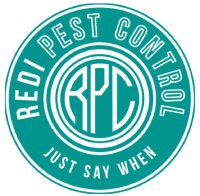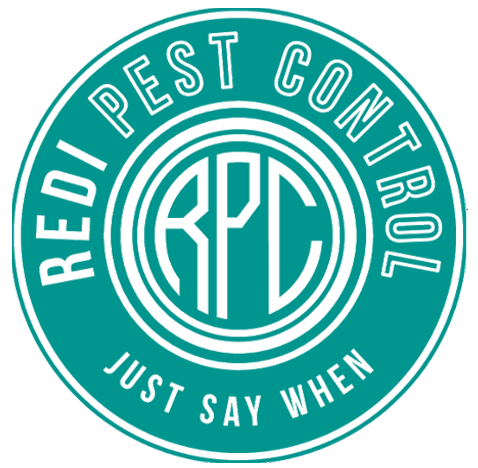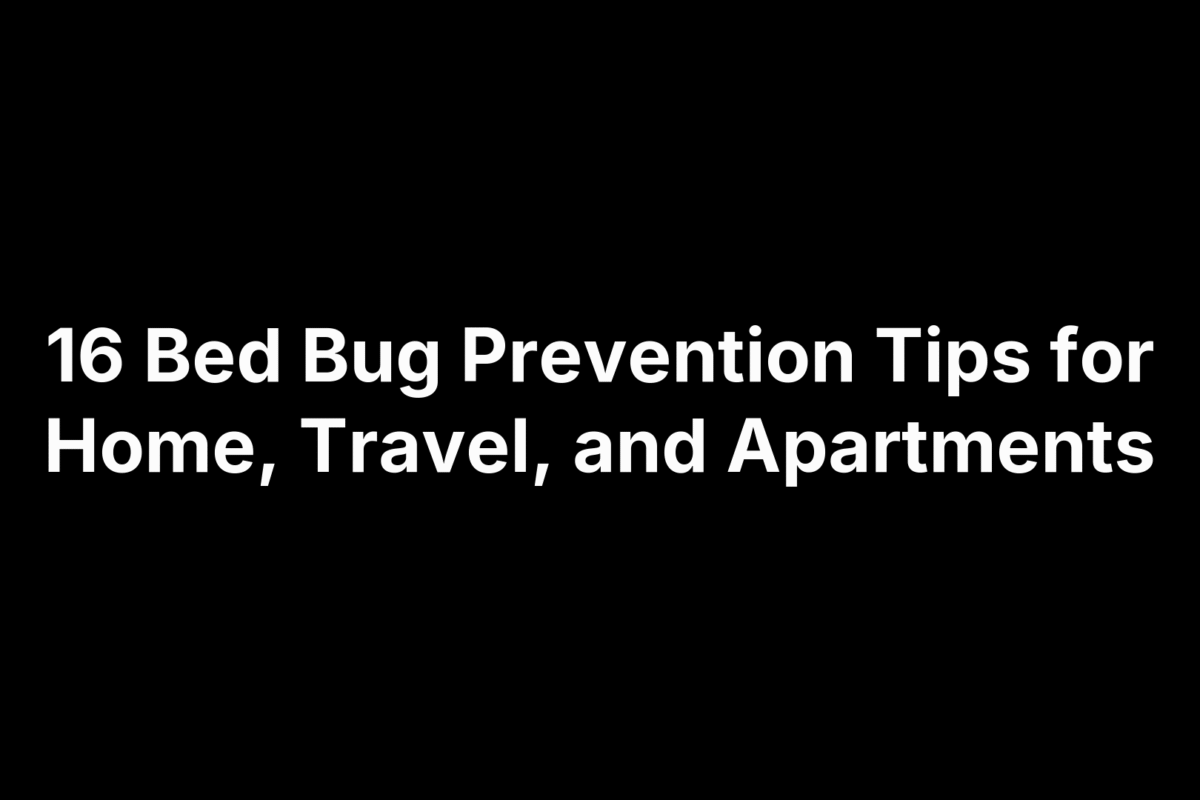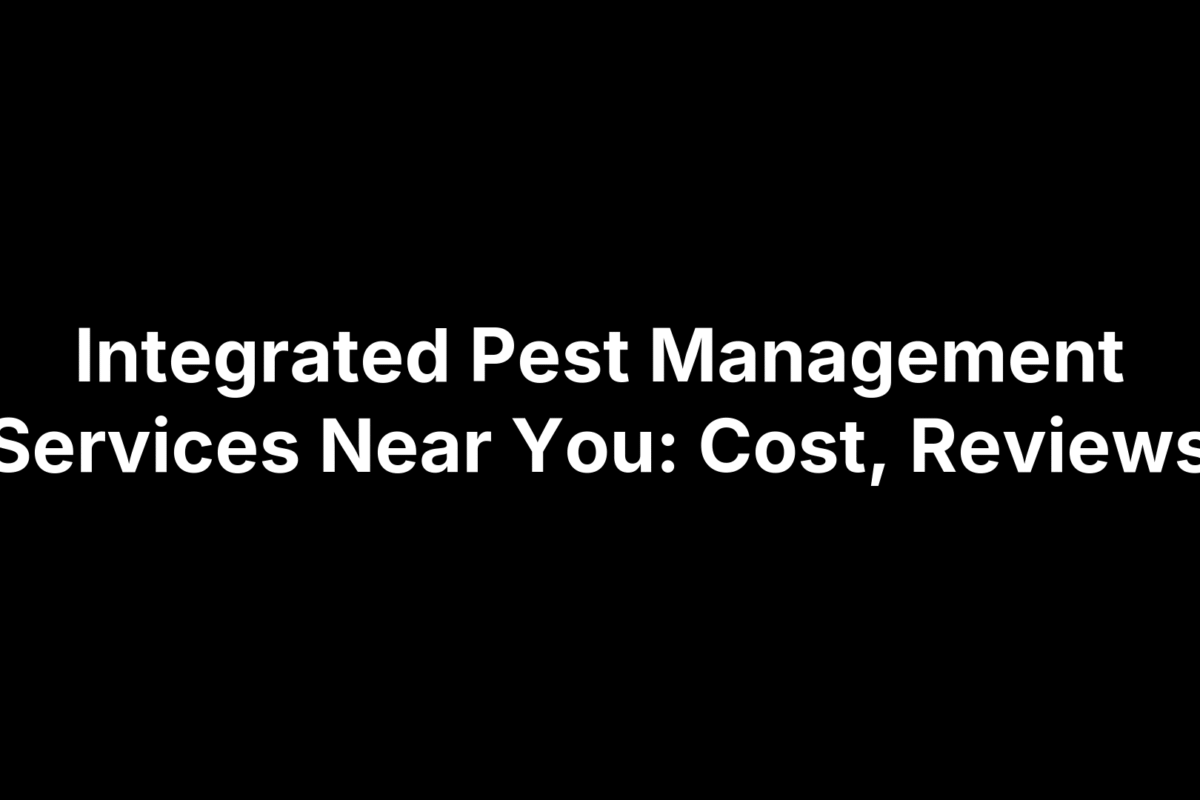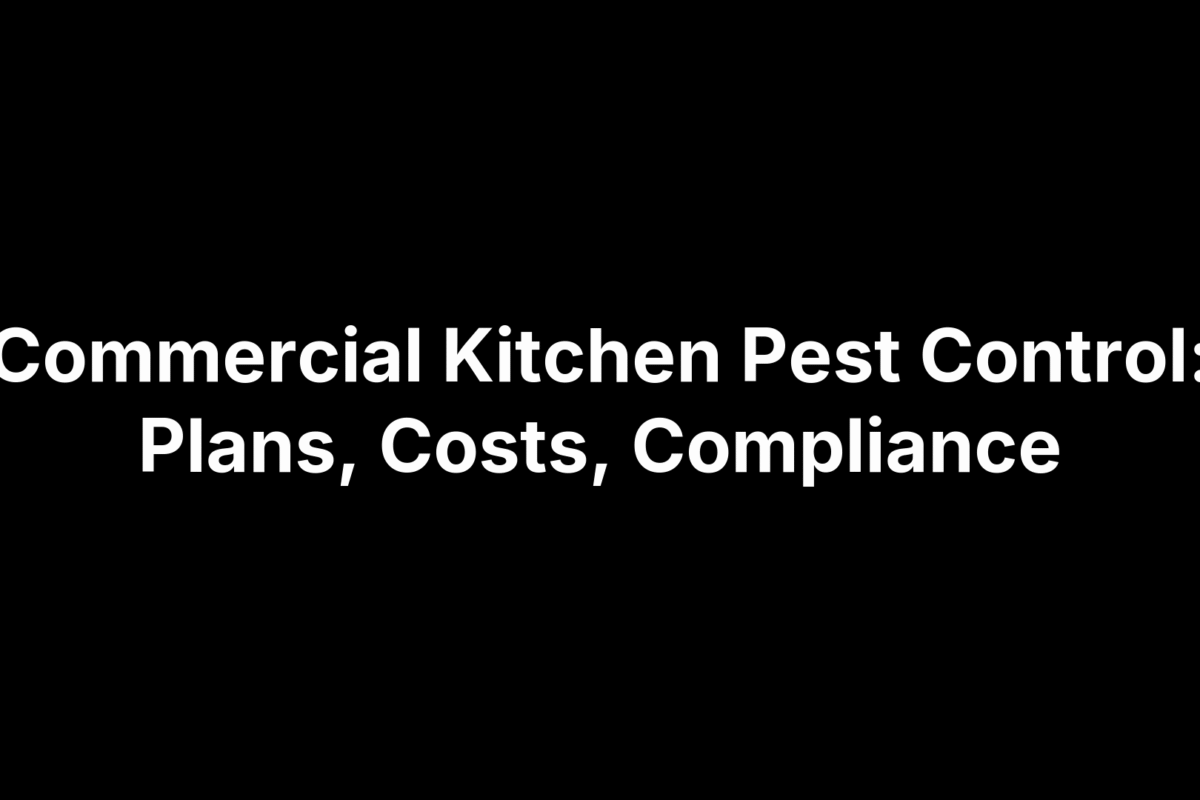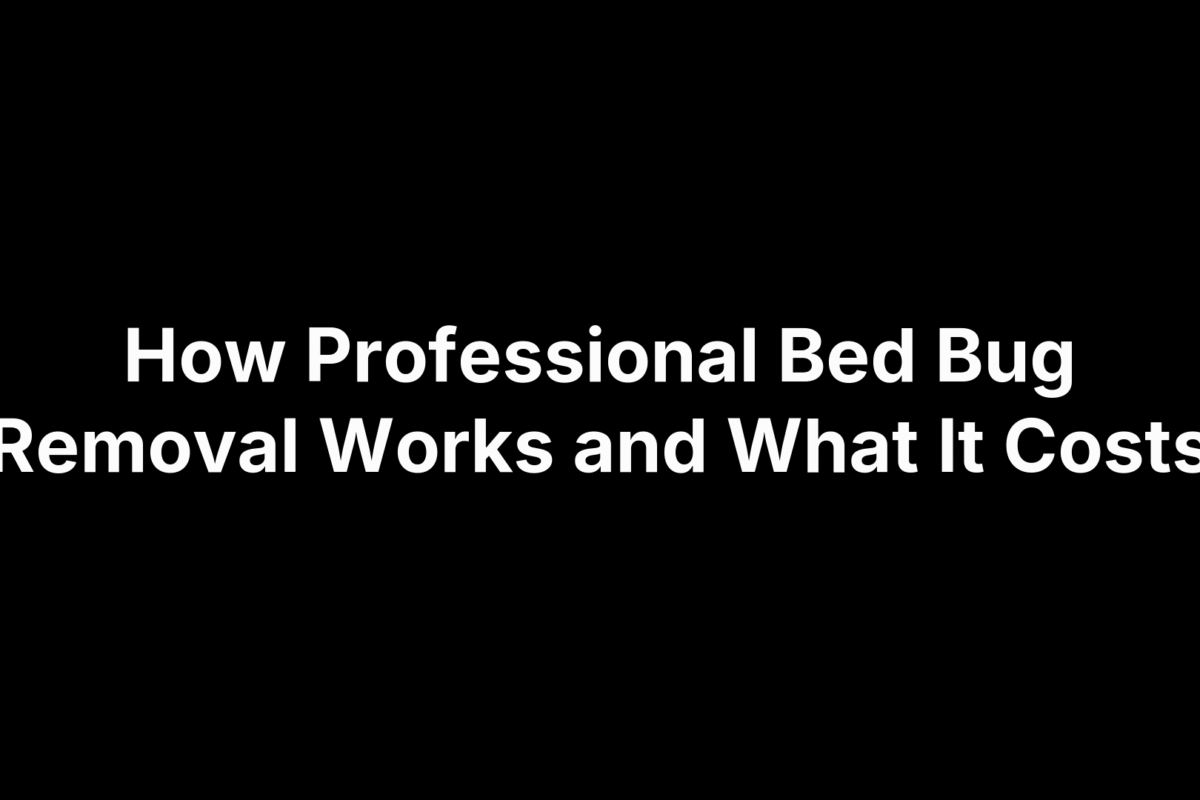Bed bugs hitchhike into your home through luggage, used furniture, guests, and even your own clothing after a simple trip across town. Once they settle in, getting rid of them becomes expensive and exhausting. The good news is that most infestations can be stopped before they start with the right habits and a little vigilance.
This guide walks you through 16 practical prevention strategies that work at home, on the road, and in apartments. You’ll learn how to inspect like a pro, protect your bed and belongings, handle travel without bringing bugs back, and coordinate with neighbors or landlords when you share walls. Each tip includes clear steps you can take today, common mistakes that leave you vulnerable, and signs that it’s time to call for backup. Whether you’re worried about your first encounter or determined never to deal with bed bugs again, these methods give you control over your space.
1. Schedule preventive service with Redi Pest Control
Professional prevention puts a barrier between your home and bed bugs before they ever move in. A trained technician can inspect your property, identify vulnerabilities, and apply targeted treatments that stop infestations at the door. This approach saves you from the stress, cost, and disruption of dealing with an active infestation later.
What this prevents
Regular professional visits catch bed bugs early when treatment is easiest and cheapest. Technicians spot warning signs you might miss, like faint fecal spots behind headboards or shed skins in furniture seams. Preventive service also protects you if bed bugs travel from neighboring units in apartments or if you bring them home after travel without realizing it.
Stopping bed bugs before they establish colonies saves you hundreds of dollars and weeks of effort compared to treating a full infestation.
How to do it step by step
Start by contacting Redi Pest Control to schedule an initial inspection and discuss your concerns, travel habits, and property type. The technician will examine sleeping areas, furniture, and entry points, then recommend a prevention schedule based on your risk level. Most households benefit from quarterly visits, while high-risk situations like frequent travel or apartment living may need monthly monitoring. During each visit, the technician applies low-odor treatments to key zones and updates you on any changes.
Mistakes to avoid
Skipping follow-up visits leaves gaps in your protection, especially after you travel or move furniture. Waiting until you see bites or bugs means you already have an infestation, not prevention. Never assume one treatment creates permanent immunity; bed bugs can arrive anytime through luggage, guests, or secondhand items.
When to call a professional
Schedule preventive service if you live in an apartment, travel regularly for work, buy secondhand furniture, or have had bed bugs in the past. Contact Redi Pest Control immediately if you notice unexplained bites, rust-colored spots on bedding, or a sweet musty odor near your bed.
2. Learn to spot bed bugs and early warning signs
Catching bed bugs before they multiply gives you the upper hand in any prevention strategy. These pests hide well, but they leave distinct clues that trained eyes can spot long before an infestation takes over. Learning what to look for transforms you from a victim into an active defender of your space.
What this prevents
Identifying bed bugs early stops them from spreading throughout your home and multiplying into thousands. A small group of bugs detected within days can be handled quickly, while a hidden colony that grows for months requires professional heat treatment or fumigation. Early detection also protects your neighbors if you live in shared housing, preventing bugs from moving between units and creating repeated cycles of infestation.
Spotting bed bugs within the first week can reduce treatment costs by 80% compared to waiting until you see widespread bites.
How to do it step by step
Focus your inspections on sleeping areas and furniture where people rest for long periods. Pull back bedding and examine mattress seams, tufts, and tags for rust-colored fecal spots, tiny white eggs, or translucent shed skins. Check the cracks around headboards, bed frames, and nightstands using a flashlight held parallel to surfaces to cast shadows that reveal bugs and eggs. Inspect upholstered furniture by pressing along seams and crevices with a credit card edge to dislodge hidden insects. Look for small blood smears on sheets from crushed bugs and a sweet, musty odor in heavily infested areas. Adult bed bugs appear reddish-brown and flat like apple seeds, while nymphs look lighter and smaller.
Mistakes to avoid
Skipping inspections because you haven’t been bitten means nothing; many people show no reaction to bites for weeks. Searching only during daylight wastes time because bed bugs hide in darkness and emerge at night when carbon dioxide from your breath attracts them. Never assume a single bug is harmless; even one pregnant female can launch an infestation.
When to call a professional
Contact Redi Pest Control if you find live bugs, multiple fecal spots, or shed skins in several locations, which signals an established colony. Reach out immediately if you discover bugs after traveling or if neighbors report infestations.
3. Protect your bed with encasements and interceptors
Physical barriers turn your bed into a fortress that bed bugs cannot easily breach or escape. Mattress encasements trap any existing bugs inside to starve while keeping new invaders out, and interceptor traps placed under bed legs catch bugs trying to climb up from the floor. Together, these tools create a defensive system that works 24/7 without chemicals or electricity.
What this prevents
Encasements stop bed bugs from establishing hidden colonies inside your mattress or box spring, where they breed in safety for months. Interceptors catch bugs traveling from infested furniture or neighboring units before they reach you while you sleep. These barriers also make future inspections faster because you only need to check smooth encasement surfaces instead of thousands of mattress seams and crevices.
A quality encasement keeps trapped bed bugs sealed away for over a year until they die, eliminating one of the hardest hiding spots to treat.
How to do it step by step
Choose bed bug-specific encasements rated to block even tiny nymphs, not standard allergy covers with larger weave gaps. Slide the encasement over your bare mattress, zip it completely shut, and inspect the zipper regularly to ensure it stays closed. Install cup-style interceptors under each bed leg and keep them in place permanently. Check interceptors weekly by removing them and looking for trapped bugs in the outer well.
Mistakes to avoid
Buying cheap encasements without bed bug certification lets small nymphs squeeze through gaps or tears. Letting blankets or bed skirts touch the floor creates a bridge that allows bugs to bypass interceptors entirely. Never remove encasements for at least 12 months after installation, even if you see no activity.
When to call a professional
Contact Redi Pest Control if you find multiple live bugs in interceptors, which indicates an active infestation beyond what barriers alone can control. Reach out immediately if encasements tear or interceptors fill with bugs faster than you can empty them.
4. Wash and dry bedding on high heat routinely
Regular high-heat laundering kills bed bugs at every life stage, from eggs to adults, making it one of the simplest and most effective bed bug prevention tips you can practice at home. Heat above 120°F destroys these pests on contact, while the dryer’s sustained temperatures ensure complete elimination. This habit costs nothing beyond your normal laundry routine and creates a consistent defense against bugs that might hitchhike onto your bedding.
What this prevents
High-heat washing eliminates bed bugs before they multiply and spread to your mattress, furniture, or walls. Routine laundering stops bugs that arrive on your clothing after travel, visits to infested spaces, or contact with contaminated items. The process also removes eggs that could hatch into a new generation, breaking the reproductive cycle before an infestation takes hold.
Washing and drying on high heat for 30 minutes kills 100% of bed bugs and eggs, making it your most reliable DIY control method.
How to do it step by step
Strip all bedding, including sheets, pillowcases, blankets, and mattress pads, and place them directly into your washing machine. Wash on the hottest water setting the fabric can tolerate, then transfer immediately to the dryer. Run the dryer on high heat for at least 30 minutes, even if items feel dry sooner. Fold and store clean bedding in sealed plastic bags until you put it back on the bed to prevent re-contamination.
Mistakes to avoid
Washing without high-heat drying wastes your effort because water alone does not kill all bed bugs. Overloading your washer or dryer prevents items from reaching lethal temperatures throughout. Never leave clean laundry sitting in baskets or on furniture where bugs could climb aboard before you remake the bed.
When to call a professional
Contact Redi Pest Control if you find live bugs or fecal spots on freshly laundered bedding, which means your infestation has spread beyond what washing can control.
5. Cut clutter and simplify around beds and sofas
Bed bugs thrive in cluttered spaces where piles of clothing, stacks of books, and stored items create hundreds of undisturbed hiding spots. Reducing clutter forces bugs into the open where you can spot them during inspections and eliminates the protected zones they need to breed safely. This strategy turns your bedroom from a bug sanctuary into an easy-to-monitor space where infestations struggle to take hold.
What this prevents
Simplifying around sleeping areas stops bed bugs from establishing hidden colonies in storage boxes, piles of laundry, or stacks of magazines near your bed. Clutter also blocks access during inspections and treatments, allowing bugs to survive in protected pockets while you waste time and money on incomplete control efforts. Clear floors and surfaces make it easier to vacuum thoroughly and spot early warning signs before a few bugs become thousands.
Removing clutter from bedrooms cuts bed bug hiding spots by up to 70%, making detection and treatment dramatically faster.
How to do it step by step
Remove everything stored under your bed and relocate items to closets with sealed containers. Clear nightstands of all non-essential items and store clothing in dressers or plastic bins instead of leaving it on chairs or floors. Keep books, papers, and decorative objects off surfaces within six feet of sleeping areas.
Mistakes to avoid
Stuffing items into drawers without organization just moves clutter out of sight while preserving hiding spots inside furniture. Keeping piles of clean laundry on the floor defeats the purpose of washing on high heat. Never store items directly against walls or furniture where bugs travel.
When to call a professional
Contact Redi Pest Control if you discover bed bugs in cluttered areas that make DIY treatment impossible or if reducing clutter reveals widespread infestation across multiple rooms.
6. Seal cracks, crevices, and gaps in walls and floors
Bed bugs travel through surprisingly small openings in walls, baseboards, and flooring to move between rooms or neighboring units. Sealing these entry points cuts off migration routes and traps bugs in areas where you can eliminate them, rather than letting them scatter and regroup in hidden spaces throughout your property. This physical barrier works permanently without chemicals and forms a critical layer in comprehensive bed bug prevention tips.
What this prevents
Caulking gaps stops bed bugs from escaping treatment areas into wall voids or adjacent apartments where they wait until it’s safe to return. Sealed cracks also prevent new bugs from entering your home through shared walls, electrical outlets, or pipe chases that connect units. Structural sealing eliminates the protected highways bugs use to spread infestations across entire buildings.
Sealing cracks around baseboards and outlets reduces bed bug movement between rooms by 60%, making treatment and prevention far more effective.
How to do it step by step
Inspect baseboards, crown molding, and flooring edges for visible gaps or cracks using a flashlight. Apply silicone caulk to seal openings around pipes, electrical boxes, and switch plates. Fill larger cracks with foam sealant before finishing with caulk for a smooth barrier.
Mistakes to avoid
Sealing without treating existing infestations traps bugs inside walls where they survive and breed. Using the wrong caulk type allows it to crack and reopen gaps within months. Never seal until you confirm no active bugs remain in treated areas.
When to call a professional
Contact Redi Pest Control if you find bed bugs emerging from walls or if sealing reveals widespread structural damage that requires repair before treatment can succeed.
7. Vacuum and clean with bed bug awareness
Regular vacuuming removes bed bugs from surfaces before they establish breeding colonies, but only if you do it correctly with the right technique and disposal methods. Strategic vacuuming captures visible bugs, eggs, and fecal matter from furniture, floors, and baseboards while giving you a close-up view of potential hiding spots during each cleaning session. This practice costs nothing beyond your normal housekeeping routine and serves as both prevention and early detection wrapped into one of the most practical bed bug prevention tips you can master.
What this prevents
Targeted vacuuming eliminates small populations of bed bugs before they multiply into infestations that require professional heat treatment. Consistent cleaning also removes the shed skins and fecal spots that attract more bugs to established hiding areas. Regular suction in high-risk zones stops hitchhikers you bring home on clothing or bags from settling into your furniture permanently.
Vacuuming bed bug hiding spots twice weekly can reduce populations by 50% when combined with other prevention methods.
How to do it step by step
Use the crevice attachment on your vacuum and focus on mattress seams, bed frame joints, baseboards, and furniture crevices rather than open floor areas. Move the nozzle slowly along surfaces without pressing too hard, which could scatter bugs instead of capturing them. After each cleaning session, immediately seal the vacuum bag in plastic and dispose of it outside. Clean bagless canisters with hot soapy water and inspect the filter for trapped bugs.
Mistakes to avoid
Vacuuming quickly or skipping weekly sessions gives bugs time to reproduce between cleanings. Leaving full vacuum bags inside your home allows captured bugs to escape and reinfest your space. Never use vacuum attachments on other surfaces without cleaning them first.
When to call a professional
Contact Redi Pest Control if you consistently find multiple live bugs during weekly vacuuming or if you discover bugs spreading faster than you can remove them through cleaning alone.
8. Be picky with secondhand furniture and textiles
Secondhand furniture represents the single most common way bed bugs enter homes, carrying hidden colonies in seams, joints, and hollow spaces that can explode into full infestations within weeks. Free curbside furniture and bargain thrift store finds may seem like great deals until you discover they come with thousands of dollars in extermination costs. Treating used items with the same caution you’d give a potential threat protects your home while still letting you enjoy budget-friendly furnishing options.
What this prevents
Careful screening of secondhand furniture stops established bed bug colonies from moving directly into your home along with that couch or dresser. Used mattresses pose the highest risk because bugs live deep inside where you cannot inspect without tearing them apart. Upholstered furniture harbors bugs in seams, cushions, and wooden frames where they breed undetected for months before spreading to your bed.
Rejecting infested secondhand furniture prevents 75% of initial bed bug introductions, making it one of the most effective bed bug prevention tips you can practice.
How to do it step by step
Examine all secondhand furniture outdoors in bright daylight before bringing it inside. Inspect every seam, cushion zipper, and joint using a flashlight and credit card to probe cracks. Look for rust-colored fecal spots, shed skins, or live bugs in tufts and crevices. Check wooden furniture for bugs hiding in screw holes and along joints where pieces connect. Reject any item with signs of infestation regardless of price or condition.
Mistakes to avoid
Assuming clean-looking furniture must be bug-free ignores the fact that bed bugs hide in places you cannot easily see. Accepting free items without inspection because they seem too good to pass up often costs you thousands in treatment. Never bring mattresses from unknown sources into your home.
When to call a professional
Contact Redi Pest Control if you discover you already brought infested furniture inside or if you need help inspecting large items before purchase.
9. Inspect hotels and rentals before you settle in
Travel brings you into contact with dozens of potential bed bug sources, and hotel rooms rank among the highest risk locations because hundreds of guests pass through annually carrying bugs from around the world. Inspecting your accommodation before unpacking gives you the power to demand a different room or leave entirely before bugs climb into your belongings. This critical habit protects you from bringing an infestation home and stands as one of the most valuable bed bug prevention tips for anyone who travels regularly.
What this prevents
A thorough hotel inspection stops bed bugs from transferring to your luggage, clothing, and personal items while you sleep in an infested room. Hotels rarely advertise pest problems, and even luxury properties can harbor bugs in isolated rooms where previous guests introduced them. Catching signs early lets you relocate before bugs establish themselves in your suitcase zippers, shoe crevices, or jacket seams where they ride home with you.
Inspecting your hotel room for five minutes before settling in prevents 90% of travel-related bed bug introductions to your home.
How to do it step by step
Leave your luggage in the bathroom or on the tile floor away from furniture and beds while you inspect. Pull back all bedding and examine mattress seams, corners, and tags using your phone flashlight. Check behind the headboard by lifting it away from the wall or looking in the gap between headboard and wall. Inspect upholstered furniture seams, cushion zippers, and the space where cushions meet armrests. Look inside nightstand drawers and along bed frame joints for rust-colored fecal spots, shed skins, or live bugs.
Mistakes to avoid
Placing your suitcase on the bed during inspection defeats your entire effort by exposing it to potential bugs. Checking only the top mattress surface while ignoring seams and the box spring misses the most common hiding spots. Never assume expensive hotels or new-looking rooms are safe without inspecting them first.
When to call a professional
Contact Redi Pest Control immediately after returning home if you find signs of bed bugs in your luggage or belongings, even if you thought the hotel room looked clean.
10. Handle luggage and clothing safely after travel
Your return home marks the most dangerous moment in travel because bed bugs hiding in luggage or clothing get a free pass into your house if you unpack carelessly. Strategic unpacking protocols keep potential hitchhikers contained where you can kill them before they scatter into furniture, carpets, or walls. These simple handling procedures transform your laundry routine into a defensive barrier that protects your entire home from travel-acquired infestations.
What this prevents
Safe luggage handling stops bed bugs from transferring to clean areas of your home while you sort through travel items. Bugs hide in suitcase linings, zipper compartments, and shoe crevices where they survive for weeks waiting for their chance to escape during unpacking. Immediate laundering kills any stowaways before they reach your bedroom and start breeding in your mattress or furniture.
Treating all travel items as potentially contaminated reduces your risk of importing bed bugs by 85% compared to unpacking normally.
How to do it step by step
Unpack your luggage in the garage, bathroom, or outdoors rather than your bedroom or living areas. Open suitcases over a clean white sheet or in the bathtub where you can spot any falling bugs. Place all clothing directly into plastic bags and seal them before carrying to your washing machine. Wash everything on the hottest water setting the fabric tolerates, then dry on high heat for at least 30 minutes. Vacuum your empty luggage thoroughly, paying attention to seams, pockets, and wheels, then wipe down hard surfaces with hot soapy water. Inspect shoes by checking inside, along seams, and around soles before storing them away from bedrooms.
Mistakes to avoid
Unpacking on your bed or bedroom floor exposes the most vulnerable areas in your home to potential bugs. Mixing clean and worn clothing without washing everything wastes the protection that heat treatment provides. Never store luggage under beds or in closets before treating it.
When to call a professional
Contact Redi Pest Control if you discover live bugs in your luggage after returning home or if you develop unexplained bites within two weeks of travel.
11. Coordinate with landlords and neighbors in apartments
Apartment living creates unique bed bug risks because these pests travel freely through shared walls, electrical conduits, and plumbing chases connecting your unit to neighbors who may not even know they have an infestation. Coordination between residents and property management transforms isolated prevention efforts into building-wide protection that stops bugs from bouncing between units in an endless cycle. This communication strategy represents one of the most critical bed bug prevention tips for anyone living in multi-unit housing.
What this prevents
Working together stops bed bugs from reinfesting your apartment immediately after treatment because they simply moved next door and waited for the coast to clear. Neighboring infestations also seed new colonies in your unit through shared walls faster than individual prevention can block them. Building-wide awareness catches outbreaks early when treatment is cheapest and prevents bugs from spreading to every unit in the complex.
Coordinated apartment treatments eliminate bed bugs 90% faster than isolated unit-by-unit approaches.
How to do it step by step
Contact your landlord immediately if you suspect or confirm bed bugs, providing photos and details about locations where you found them. Request that adjacent units above, below, and beside yours receive inspection even if residents report no problems. Document all communication with property management in writing and follow up if they delay action. Ask your landlord about building-wide prevention policies and inspection schedules to understand your protection level.
Mistakes to avoid
Hiding your infestation from management out of embarrassment allows bugs to spread throughout the building. Treating your unit without notifying neighbors lets bugs escape next door and return later. Never assume your landlord will inspect adjacent units without you specifically requesting it.
When to call a professional
Contact Redi Pest Control if your landlord refuses to treat your unit, delays action beyond one week, or if bugs keep returning after building treatments that excluded neighboring units.
12. Protect backpacks, dorms, and workspaces
College dorms, shared workspaces, and public seating areas create perfect conditions for bed bugs to spread because they bring together people, belongings, and furniture in close quarters where bugs easily transfer between items. Backpacks and bags pick up hitchhikers from infested chairs, lockers, and public transit seats, then carry them directly to your bed when you drop them on your furniture at home. These bed bug prevention tips for high-traffic environments protect you where traditional home-based strategies fall short.
What this prevents
Protecting your belongings in public spaces stops bed bugs from hitching rides on items you carry between infested areas and your clean home. Dorm rooms face constant risk because roommates, visitors, and hallway furniture create multiple introduction points that individual prevention cannot fully control. Workplace infestations spread through shared lockers, break room furniture, and coat racks where bugs transfer between employees’ belongings during normal daily routines.
How to do it step by step
Keep your backpack, purse, and coat off chairs, beds, and floors by hanging them on hooks or placing them on desks and hard surfaces away from upholstered furniture. Store your belongings in sealed plastic bins rather than fabric storage in dorm rooms. Inspect your workspace chair and desk area monthly for fecal spots or shed skins along seams and crevices.
Keeping bags off soft surfaces in public spaces reduces bed bug transfer risk by 70% compared to placing them on chairs or floors.
Mistakes to avoid
Placing backpacks on your bed when you return home transfers any hitchhikers directly to your sleeping area. Sharing clothing, bags, or furniture with roommates without inspecting first spreads bugs between people. Never assume school or workplace furniture is safe without checking it regularly.
When to call a professional
Contact Redi Pest Control if you discover bed bugs in your workspace or dorm room, as building-wide treatment will be necessary to eliminate the source.
13. Host guests and visit others without bringing bugs home
Holiday gatherings, overnight visitors, and social visits create opportunities for bed bugs to transfer between homes on clothing, bags, and personal items that travel with guests. Managing these interactions without paranoia or rudeness requires simple protocols that protect your home while maintaining normal hospitality. These bed bug prevention tips for social situations balance prevention with the reality that you cannot avoid human connection.
What this prevents
Hosting protocols stop guests from accidentally introducing bed bugs they carry from their own infestations or recent travel into your clean home. Visiting friends or family who have bed bugs puts you at risk of bringing hitchhikers back on your clothing, shoes, or bags. Social transfer represents a growing infestation source as people move between homes more frequently for holidays, celebrations, and extended visits.
Establishing guest protocols reduces bed bug introduction from visitors by 60% without creating awkward conversations.
How to do it step by step
When hosting overnight guests, provide them with plastic bags for dirty laundry and designate a contained storage area away from bedrooms for their belongings. Place a sheet over furniture where guests will sit and launder it immediately after they leave. When visiting others, keep your bag on hard surfaces rather than beds or upholstered furniture, and change clothes plus launder everything on high heat as soon as you return home.
Mistakes to avoid
Letting guests place luggage directly on your bed or storing their items in your bedroom closet exposes your most vulnerable spaces unnecessarily. Avoiding social interaction entirely because of bed bug fears creates isolation without meaningful protection. Never assume family members or close friends cannot have bed bugs.
When to call a professional
Contact Redi Pest Control if you discover signs of bed bugs within two weeks of hosting guests or if visitors inform you they found an infestation after staying at your home.
14. Treat small items with heat, steam, or freezing
Small items like shoes, electronics, toys, and books cannot survive a washing machine cycle, but they can still harbor bed bugs in crevices, seams, and internal spaces where manual cleaning fails to reach. Temperature extremes kill these pests without chemicals or water damage, giving you safe options to decontaminate belongings that would otherwise remain vulnerable or need to be discarded. These bed bug prevention tips for specialty items expand your control toolkit beyond basic laundering to protect everything you own.
What this prevents
Temperature treatment eliminates bed bugs hiding in items you cannot wash or easily inspect, preventing these objects from reseeding your home after you complete other prevention steps. Books, electronics, picture frames, and decorative objects create protected hiding spots where bugs survive traditional cleaning attempts. Killing bugs in non-launderable items closes the gaps that allow infestations to persist despite your best efforts with bedding and furniture.
Properly applied heat or cold treatment achieves 100% mortality of bed bugs in treated items, matching the effectiveness of professional fumigation for small objects.
How to do it step by step
For heat treatment, place items in sealed plastic bags and leave them in a car parked in direct sunlight with windows closed for eight hours when outdoor temperatures exceed 90°F, or use your dryer on high heat for 30 minutes for items that can tolerate tumbling. Steam treatment requires a commercial steamer that reaches 160-180°F, which you apply slowly across all surfaces while checking temperatures with an infrared thermometer. Freezing demands placing bagged items in a freezer set to 0°F for four full days, starting the count only after the center of the object reaches target temperature.
Mistakes to avoid
Using your oven or microwave to heat-treat items creates fire hazards and destroys electronics. Attempting freezing in outdoor winter conditions fails because sunlight, temperature fluctuations, and insufficient cold exposure let bugs survive. Never assume room temperature storage kills bugs over time.
When to call a professional
Contact Redi Pest Control if you have valuable items requiring treatment that you cannot safely heat or freeze yourself, or if bugs persist despite treating all accessible belongings.
15. Use traps and regular inspections to monitor
Monitoring tools and scheduled inspections give you early warning of bed bug activity before small problems become costly infestations. Passive traps work continuously without your involvement to capture bugs as they move around your sleeping areas, while regular visual checks catch signs you might otherwise miss until bites or widespread evidence force you to notice. These bed bug prevention tips for ongoing vigilance transform you from reactive to proactive, catching problems when treatment takes minutes instead of months.
What this prevents
Consistent monitoring detects new introductions from travel, guests, or neighboring units within days of arrival rather than weeks or months later when bugs have multiplied across your entire home. Traps placed strategically around beds and furniture capture bugs moving between hiding spots and feeding areas, giving you physical evidence even when visual inspections find nothing. Early detection through monitoring reduces treatment costs by up to 90% because you can eliminate small populations with targeted efforts instead of whole-home fumigation or heat treatment.
Installing monitoring traps catches 80% of new bed bug introductions within the first week, often before you see a single bite.
How to do it step by step
Place cup-style interceptor traps under all four legs of your bed and check them weekly by removing each trap and examining the outer well for captured bugs. Install sticky monitors along baseboards behind furniture and inspect them monthly under bright light for trapped insects. Conduct visual inspections of mattress seams, bed frame joints, and furniture crevices every two weeks using a flashlight and magnifying glass. Record your findings in a notebook with dates and locations to track patterns over time.
Mistakes to avoid
Checking traps less than weekly allows captured bugs to escape or gives growing populations time to spread before you notice them. Placing traps randomly instead of under bed legs wastes their effectiveness because bugs concentrate their movement around sleeping areas. Never ignore a single trapped bug as a fluke, even if subsequent checks show nothing.
When to call a professional
Contact Redi Pest Control if you find multiple bugs in traps over consecutive weeks or if visual inspections reveal fecal spots and shed skins spreading to new locations despite your monitoring efforts.
16. Avoid risky DIY hacks and know when to call a pro
Internet forums and social media overflow with dangerous bed bug solutions that promise quick fixes but deliver chemical burns, house fires, or ineffective results that waste precious time while bugs multiply. Desperate homeowners often turn to extreme measures involving flammable liquids, agricultural pesticides, or repeated fogger applications that poison their families without killing the bugs. Understanding which bed bug prevention tips actually work and recognizing when professional intervention becomes necessary protects both your health and your home from amateur treatment disasters.
What this prevents
Avoiding risky DIY methods protects you from chemical exposure, fires, and explosion hazards that send dozens of people to emergency rooms annually when homemade bed bug treatments go wrong. Rubbing alcohol, kerosene, and gasoline ignite easily and create vapor clouds that explode when they contact pilot lights or electrical sparks. Agricultural pesticides and garden chemicals poison families and pets because they contain concentrations never intended for indoor residential use. Failed DIY attempts also allow infestations to spread while you waste weeks trying ineffective solutions, transforming a small problem into a whole-home disaster that requires expensive professional fumigation or heat treatment.
Avoiding dangerous DIY methods prevents 95% of treatment-related injuries while professional intervention eliminates infestations three times faster than amateur attempts.
How to do it step by step
Research any suggested treatment method by checking if the Environmental Protection Agency approves it for indoor residential bed bug control before attempting it. Reject any solution involving rubbing alcohol, kerosene, gasoline, or outdoor pesticides regardless of online testimonials claiming success. Skip bug bombs and foggers because they cannot penetrate the cracks where bed bugs hide and only scatter populations to new areas. Limit your DIY efforts to proven non-chemical methods like laundering, vacuuming, encasements, and temperature treatments with proper equipment.
Mistakes to avoid
Trying multiple failed treatments in sequence while bugs multiply wastes the narrow window when simple professional intervention would have worked. Mixing different pesticides or applying them at higher concentrations than labels specify creates toxic conditions without improving results. Never assume you can handle an established infestation yourself just because you successfully prevented bugs in the past.
When to call a professional
Contact Redi Pest Control immediately if you find bed bugs in multiple rooms, discover bugs after two weeks of DIY efforts, or notice infestations spreading despite your prevention measures. Reach out right away if you live in an apartment where treatment requires coordination beyond your control or if anyone in your home develops health issues that complicate chemical treatments.
Staying ahead of bed bugs
Prevention works because it stops bed bugs before they establish the hidden colonies that make elimination expensive and exhausting. Each of these 16 bed bug prevention tips addresses a specific vulnerability in your home, travel routine, or living situation, but the real power comes from combining multiple strategies into a complete defense system. Regular inspections catch early arrivals, physical barriers block access to your sleeping areas, and smart habits around travel and secondhand items cut off the most common introduction routes.
Your best protection combines vigilant monitoring with professional support when you need it. Redi Pest Control offers preventive inspections and targeted treatments that catch problems before they become infestations, giving you peace of mind whether you travel frequently, live in an apartment, or simply want to protect your home from these persistent pests. Schedule a consultation today to build a customized prevention plan that fits your specific situation and risk level.
